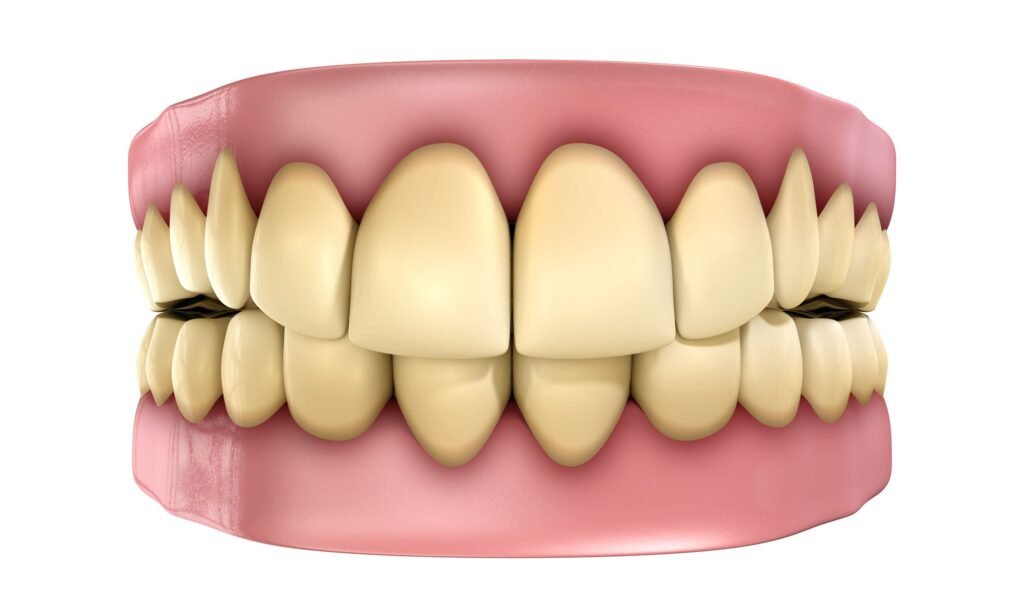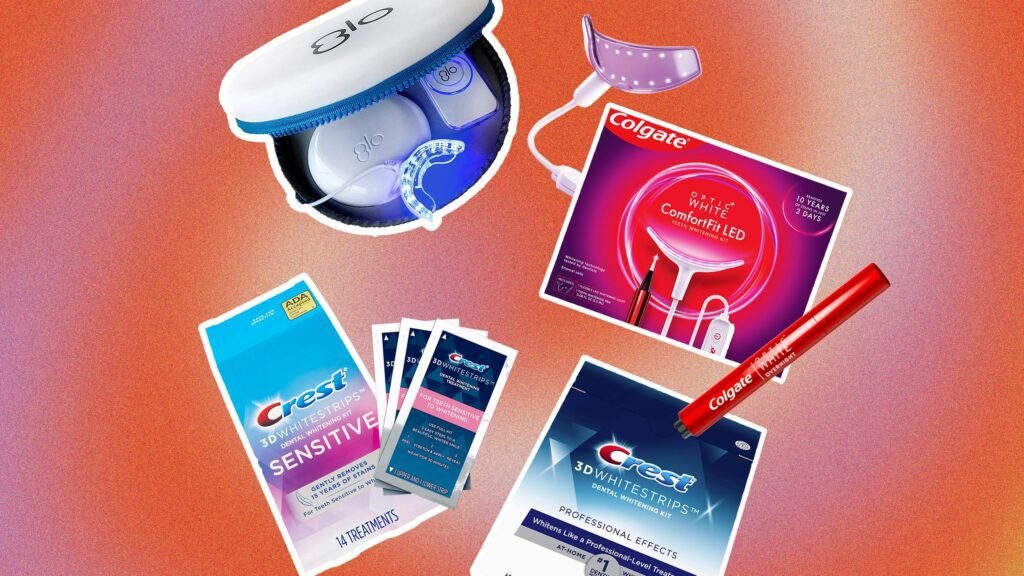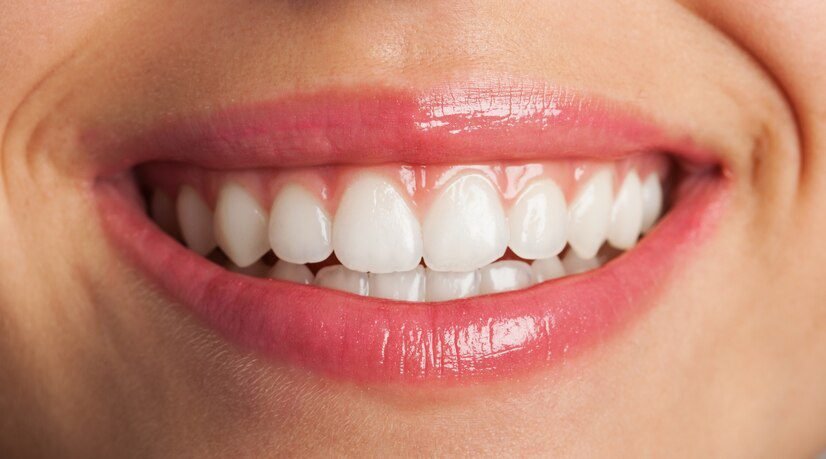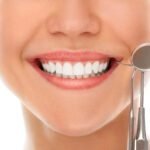Table of Contents
Understanding Teeth Discoloration
Many people are concerned about the discoloration of their teeth. Teeth discoloration can occur due to a variety of reasons, such as consuming certain foods and beverages, smoking, poor oral hygiene, aging, and even certain medical conditions. Understanding the causes of teeth discoloration can help individuals make more informed decisions about their oral care routine and seek appropriate treatment options.
One common cause of teeth discoloration is the consumption of dark-colored foods and beverages. Coffee, tea, red wine, and certain fruits and vegetables can leave stains on the teeth over time. Additionally, smoking or using tobacco products can also contribute to teeth discoloration. Poor oral hygiene, such as infrequent brushing and flossing, can allow plaque and tartar buildup, which can lead to yellowing of the teeth. Aging is another factor that can result in teeth discoloration, as the enamel naturally wears down over time, revealing the yellow dentin underneath.
In summary, teeth discoloration is a common concern for many individuals. Whether it is due to dietary habits, smoking, poor oral hygiene, aging, or other factors, understanding the underlying causes can help individuals take the necessary steps to maintain or regain a bright and white smile. Stay tuned to learn more about the science behind teeth whitening and the various treatment options available for at-home teeth whitening.

The Science behind Teeth Whitening
Teeth whitening is a scientific process that involves the use of various methods and ingredients to restore the natural whiteness of teeth. The discoloration of teeth can occur due to a variety of factors such as age, diet, tobacco use, and poor oral hygiene. Understanding the science behind teeth whitening can help you make informed decisions about the most effective methods for achieving a brighter smile.
One of the main mechanisms behind teeth whitening is the breakage of chromophores, which are molecules responsible for the coloration of teeth. Whitening agents, such as hydrogen peroxide or carbamide peroxide, penetrate the enamel surface and break down the chromophores, resulting in a lighter shade. This oxidation process can be accelerated by exposure to light or heat.
It is important to note that teeth whitening procedures can vary in their effectiveness and safety. Overuse or improper application of whitening agents can lead to tooth sensitivity or gum irritation. Consulting with a dental professional is recommended to determine the most suitable treatment for your specific needs. With the right understanding of the science behind teeth whitening, you can achieve a brighter smile while ensuring the long-term health and integrity of your teeth.
The Benefits of At-Home Teeth Whitening
At-home teeth whitening kits have gained popularity in recent years due to their convenience and affordability. Many individuals are opting for these kits as they offer several benefits. Firstly, at-home teeth whitening allows individuals to achieve a brighter smile from the comfort of their own homes. This eliminates the need to visit a dentist’s office for professional treatment, saving both time and money. Additionally, these kits provide a sense of control over the whitening process, allowing users to whiten their teeth at their own pace and customize the treatment to their specific needs. This flexibility is particularly beneficial for individuals with busy schedules or those who prefer a more gradual approach to teeth whitening.
| Benefits | Description |
|---|---|
| Convenience | Can be done at any time and in the comfort of your own home. |
| Cost-Effective | Generally less expensive compared to professional whitening treatments. |
| Accessibility | Over-the-counter whitening kits and products are readily available in most drugstores and online. |
| Control | Allows individuals to control the frequency and duration of treatments based on their needs. |
| Gradual Whitening | Provides a gradual improvement in tooth color over time with consistent use. |
| Customization | Some at-home kits offer customizable trays or options to tailor the whitening process to individual preferences. |
Choosing the Right At-Home Teeth Whitening Kit
When it comes to choosing the right at-home teeth whitening kit, it’s important to consider a few key factors. First and foremost, you should look for a kit that has been approved by dental professionals. This will ensure that the product is safe, effective, and backed by scientific research.
Additionally, you’ll want to find a kit that fits your specific needs. Different kits offer varying levels of whitening power, so be sure to choose one that aligns with your desired outcome. Some kits may also include additional features, such as sensitivity relief or enamel protection, which can be especially beneficial for those with more sensitive teeth.
Another consideration is the application method of the kit. Many kits utilize trays or strips, while others may involve the use of gels or pens. Think about which method works best for you and your lifestyle, as this can greatly impact your overall experience. Lastly, be sure to read reviews from other users to get a sense of their satisfaction with the product. By considering these factors and doing your research, you can confidently choose the right at-home teeth whitening kit for a brighter, whiter smile.

Preparation: What You Need to Do Before Starting
Before you start with at-home teeth whitening, it is important to properly prepare to ensure the best results. The first step is to schedule a dental check-up to address any existing dental issues. It’s crucial to have a healthy foundation before proceeding with any whitening treatments. Your dentist will evaluate your oral health and provide appropriate recommendations based on your specific needs.
Once you have the green light from your dentist, it’s essential to gather the necessary supplies for the whitening process. This typically includes a whitening product or kit, which can range from whitening strips to gel-filled trays. It’s crucial to choose a reputable brand that is proven to be effective and safe. Additionally, make sure to read and follow the instructions carefully to avoid any complications. Additionally, gather a toothbrush with soft bristles, toothpaste designed for sensitive teeth, and floss. By having all these items ready beforehand, you can streamline the process and ensure a smoother experience.
| Preparation Step | Description |
|---|---|
| Consult with a Dentist | Seek advice from a dental professional to assess your oral health and determine if teeth whitening is suitable. |
| Choose Whitening Method | Select an appropriate whitening method based on your preferences, budget, and dental health. |
| Read Instructions | Thoroughly read the instructions provided with the whitening product to understand proper usage and precautions. |
| Perform Oral Hygiene | Brush and floss your teeth to remove any plaque and debris, ensuring the whitening agent can reach the enamel. |
| Check for Sensitivity | If you have sensitive teeth or gums, consider using desensitizing toothpaste or consulting with your dentist. |
| Take Before Photos | Capture clear photos of your teeth from various angles to compare with the results after the whitening treatment. |
| Protect Gums and Lips | Apply a protective barrier such as petroleum jelly or whitening trays to shield the gums and lips from irritation. |
| Avoid Staining Foods and Drinks | Refrain from consuming foods and beverages that may cause stains, such as coffee, tea, red wine, and dark sauces. |
| Set Realistic Expectations | Understand that results may vary, and it may take multiple sessions to achieve your desired level of whitening. |
Step-by-Step Guide to At-Home Teeth Whitening
Achieving a brighter, whiter smile at home is easier than you may think. Here is a step-by-step guide to help you navigate the process of at-home teeth whitening.
Step 1: Consult with Your Dentist
Before starting any teeth whitening treatment, it is essential to consult with your dentist. They can examine your oral health and ensure that you are a suitable candidate for at-home whitening. Your dentist can also provide personalized recommendations based on your needs and preferences.
Step 2: Choose the Right At-Home Whitening Kit
There are numerous at-home teeth whitening kits available, each offering different strengths and features. It is crucial to choose a kit that suits your requirements and is known for its effectiveness. Look for products that have the American Dental Association (ADA) seal of approval, as this indicates that they have undergone rigorous testing and meet high safety standards.
Step 3: Read and Follow the Instructions Carefully
Once you have selected your at-home whitening kit, thoroughly read the instructions provided. Each kit may have its own specific set of instructions, including the recommended application time, frequency, and duration of the treatment. It is essential to follow these instructions precisely to ensure optimal results and minimize the risk of potential side effects.
Step 4: Prepare Your Teeth and Mouth
Before starting the whitening process, it is recommended to brush and floss your teeth to remove any plaque or debris. This allows the whitening gel to penetrate the enamel more effectively. You may also want to consider using a desensitizing toothpaste or gel if you have sensitive teeth or gums.
Step 5: Apply the Whitening Gel
Using the provided applicator or tray, apply a thin, even layer of the whitening gel to your teeth. Be careful not to overload the trays, as excess gel may irritate your gums. Ensure that the gel comes into contact with the front surface of each tooth you wish to whiten.
Step 6: Allow the Gel to Work
The length of time you should leave the whitening gel on your teeth will depend on the instructions provided with your chosen kit. Typically, it can vary from 10 minutes to a couple of hours. It is important to avoid eating, drinking, or rinsing your mouth during this time to allow the gel to work uninterrupted.
Step 7: Rinse and Cleanse
After the recommended duration, carefully remove the whitening trays and rinse your mouth thoroughly with water. Brush your teeth gently to remove any residual gel. It is advisable to avoid consuming staining foods or beverages, such as coffee or red wine, immediately after whitening to maintain the results.
By following these step-by-step instructions, you can effectively whiten your teeth with an at-home whitening kit. However, it is vital to remember that results may vary from person to person, and it is always best to consult with your dentist for personalized advice and guidance.
Common Ingredients in At-Home Teeth Whitening Kits
Common Ingredients in At-Home Teeth Whitening Kits
When it comes to at-home teeth whitening kits, it’s important to understand the common ingredients that are often included in these products. These ingredients play a vital role in the whitening process and can help you achieve a brighter smile. Some of the most common ingredients you’ll find in these kits include hydrogen peroxide and carbamide peroxide.
Hydrogen peroxide, known as the active ingredient in many teeth whitening products, is a powerful bleaching agent. It works by breaking down stains on the surface of the teeth, leaving them looking whiter and brighter. Carbamide peroxide, on the other hand, is a slower-acting ingredient that is often used in at-home whitening kits. When it comes into contact with water, carbamide peroxide breaks down and releases hydrogen peroxide, which then works to whiten teeth. This ingredient is popular because it produces longer-lasting results.
These ingredients, along with other additives such as flavorings and desensitizers, are carefully formulated to provide safe and effective teeth whitening at home. It’s important to follow the instructions provided with the kit and to use it as directed to minimize any potential side effects. Remember, while at-home teeth whitening can be an effective way to brighten your smile, it’s always a good idea to consult with your dentist before starting any whitening treatment to ensure it is suitable for your specific dental needs.
Potential Risks and Side Effects
Teeth whitening is a popular cosmetic procedure that can lead to a brighter and more confident smile. However, it is important to be aware of the potential risks and side effects associated with at-home teeth whitening kits. While these kits are generally safe and effective when used as directed, there are a few things to keep in mind.
One common side effect of at-home teeth whitening is tooth sensitivity. This occurs when the whitening agents in the kit penetrate the enamel of the teeth, causing temporary sensitivity to hot and cold temperatures. This sensitivity typically subsides after a few days, but it can be uncomfortable in the meantime. It is recommended to use a toothpaste formulated for sensitive teeth during the whitening process to help minimize this side effect.
Another potential risk of at-home teeth whitening is gum irritation. The whitening gel in the kit can come into contact with the gums, leading to temporary redness, swelling, or even blisters. To prevent this, it is important to carefully follow the instructions provided with the kit and only apply the gel to the teeth, avoiding contact with the gums. If any irritation occurs, it is advisable to discontinue use and consult with a dentist.
While these risks and side effects are generally mild and temporary, it is crucial to use at-home teeth whitening kits responsibly and under the guidance of a dental professional. If you have any concerns or questions about the safety and effectiveness of these kits, it is always best to seek the advice of a dentist. They can provide personalized recommendations and help ensure you achieve optimal results without compromising your oral health.
Tips for Achieving Optimal Results
To achieve optimal results with at-home teeth whitening, it’s important to follow a few key tips. Firstly, it’s crucial to choose the right at-home teeth whitening kit for your needs. Look for kits that contain high-quality ingredients and credible endorsements from dental professionals. Additionally, consider consulting with your dentist to determine the best approach and obtain recommendations tailored to your specific dental condition.
Secondly, it’s essential to carefully follow the instructions provided with the at-home teeth whitening kit. This includes applying the whitening solution as directed and adhering to the recommended amount of time for each application. Overusing the whitening solution or leaving it on for too long can lead to tooth sensitivity and other potential side effects.
Furthermore, maintaining good oral hygiene habits during the teeth whitening process is crucial. This includes brushing your teeth thoroughly, flossing daily, and rinsing with a fluoride mouthwash. By keeping your teeth clean and free from plaque and food debris, you are allowing the whitening agents in the kit to work more effectively.
In addition, it is advisable to avoid food and drinks that are known to stain teeth, such as coffee, tea, red wine, and tobacco products. Minimizing consumption of these substances will help to prolong the results of the whitening treatment.
By following these tips, you can increase your chances of achieving optimal results with at-home teeth whitening. Remember, consistency and patience are key, as it may take some time to see noticeable improvements in tooth color.
How Long Does At-Home Teeth Whitening Take?
At-home teeth whitening is a popular option for those looking to brighten their smile without the need for professional dental treatments. Many people wonder how long it takes to see results from at-home teeth whitening kits. The duration of the whitening process can vary depending on several factors.
Firstly, it’s important to note that at-home teeth whitening is not an overnight solution. Unlike professional treatments that use high concentrations of bleaching agents, at-home kits typically have lower concentrations and therefore may take longer to achieve desired results. On average, most at-home teeth whitening treatments take anywhere from one to three weeks to show noticeable improvement in tooth color.
The effectiveness and speed of at-home teeth whitening can also depend on the severity of tooth discoloration. Surface stains caused by coffee, tea, or tobacco are generally easier to remove and may show improvement within the first week of treatment. However, deep stains that have penetrated the tooth enamel may require more time and consistent usage of the whitening kit to achieve desired results. It’s important to be patient and follow the instructions provided with the kit for optimal outcomes.
Stay tuned for the next section where we will delve deeper into the specific steps involved in at-home teeth whitening and provide a comprehensive guide to help you navigate through the process with ease.
Maintaining Your Results: Post-Whitening Care
Maintaining the results of your at-home teeth whitening treatment is crucial for prolonging the effects and enjoying a dazzling smile. After completing the whitening process, there are several post-whitening care practices that can help you maintain the whiteness of your teeth.
First and foremost, it’s important to maintain good oral hygiene by brushing your teeth at least twice a day with a fluoride toothpaste and flossing daily. This will help prevent the buildup of plaque and minimize the risk of stains. Additionally, consider using a whitening toothpaste to keep your teeth looking bright and radiant.
Furthermore, be mindful of your diet and make conscious choices to avoid foods and beverages that are known to stain teeth, such as coffee, tea, red wine, and dark berries. If you do consume these items, rinse your mouth with water afterward or brush your teeth to minimize staining. Additionally, using a straw while drinking staining beverages can help minimize contact with your teeth. Lastly, quit smoking or using tobacco products, as they can cause severe discoloration of your teeth.
With these simple post-whitening care practices, you can maintain the results of your at-home teeth whitening treatment and enjoy a vibrant smile for an extended period. Remember to practice good oral hygiene, avoid staining foods and beverages, and make lifestyle choices that promote dental health. Your commitment to post-whitening care will ensure long-lasting results and a confident smile.

Combining At-Home Teeth Whitening with Professional Treatments
Combining at-home teeth whitening with professional treatments can be an effective way to achieve optimal results and enhance the overall brightness of your smile. While at-home whitening kits provide convenience and affordability, they may not always deliver the same level of efficacy as professional treatments.
Professional teeth whitening treatments, such as those performed by dentists, can offer stronger and more concentrated whitening agents that penetrate the enamel and remove deep stains. This can result in a more noticeable and longer-lasting whitening effect. By combining these professional treatments with at-home whitening kits, you can maintain and prolong the results achieved in the dental office.
One popular method of combining at-home and professional teeth whitening is to undergo an in-office treatment to kickstart the process and then continue with at-home maintenance. This approach not only jumpstarts the whitening process but also allows you to continue optimizing your results in the comfort of your own home. By following the guidance of your dentist and using the provided at-home whitening kit, you can achieve a brighter smile and maintain the effects of the professional treatment.
Alternative Methods for Teeth Whitening at Home
Whitening your teeth at home doesn’t have to be limited to commercial kits and products. There are several alternative methods that you can try in the comfort of your own home. One such method is oil pulling, an ancient Ayurvedic practice that involves swishing oil in your mouth for several minutes. Proponents claim that oil pulling can remove stains and bacteria, resulting in whiter teeth. While there is limited scientific evidence to support this claim, some studies have shown that oil pulling with coconut oil can reduce plaque and gingivitis.
Another alternative method for teeth whitening at home is the use of activated charcoal. Activated charcoal is a highly porous substance that binds to toxins and stains, which can be beneficial for removing surface stains on teeth. However, it’s important to note that there is limited research on the long-term effects of using activated charcoal for teeth whitening. It’s also worth mentioning that activated charcoal can be abrasive and may erode tooth enamel if used too frequently or vigorously. Therefore, it’s advisable to consult with your dentist before using activated charcoal as a whitening method.
Addressing Sensitivity during At-Home Teeth Whitening
Addressing Sensitivity during At-Home Teeth Whitening
Sensitive teeth can be a common concern when embarking on at-home teeth whitening treatments. While this side effect may vary from person to person, it is important to understand why this sensitivity occurs and how to mitigate its effects. Sensitivity during teeth whitening can be attributed to the active ingredients in whitening products penetrating the enamel and reaching the dentin, which contains microscopic tubules that connect to nerves. This can lead to a temporary increase in tooth sensitivity during and after the whitening process.
To address sensitivity, it is recommended to take a proactive approach before starting your at-home teeth whitening regimen. Using a desensitizing toothpaste a few weeks prior to beginning the treatment can help to minimize sensitivity. These toothpastes contain ingredients such as potassium nitrate or strontium chloride, which help block the nerve pathways and reduce discomfort. Additionally, avoiding hot or cold food and beverages immediately after whitening and using a soft-bristled toothbrush can help protect the enamel and alleviate sensitivity. If sensitivity persists or worsens, it is essential to consult with a dental professional for further evaluation and guidance. By addressing sensitivity proactively and following these simple guidelines, you can achieve a brighter smile without compromising your dental comfort.
Note: It is always important to consult with a dentist before starting any teeth whitening treatment to determine the root cause of sensitivity and ensure the most appropriate approach.
Understanding the Limitations of At-Home Teeth Whitening
At-home teeth whitening kits have gained popularity in recent years as an affordable and convenient alternative to professional teeth whitening treatments. While these kits can be effective in brightening your smile, it is important to understand their limitations. One of the main limitations of at-home teeth whitening is the strength of the whitening agent used.
Most at-home teeth whitening kits contain a lower concentration of hydrogen peroxide or carbamide peroxide compared to professional treatments. This means that the whitening process may take longer and the results may not be as dramatic. Additionally, some stains, such as those caused by certain medications or tooth trauma, may not respond well to at-home whitening kits. In these cases, a professional treatment may be necessary to achieve the desired results.
Another limitation of at-home teeth whitening is the risk of sensitivity. Whitening agents can sometimes irritate the gums and cause tooth sensitivity, especially if they are applied incorrectly or left on for too long. It is important to follow the instructions provided with the kit and to consult with a dentist if you experience any discomfort or sensitivity during the whitening process.
While at-home teeth whitening kits can be a convenient option for brightening your smile, it is important to be aware of their limitations. Professional treatments may be more suitable for certain types of stains or for individuals with sensitive teeth. Consulting with a dentist can help determine the best course of action for achieving a whiter, brighter smile.
Consulting with a Dentist: When to Seek Professional Advice
When considering teeth whitening options, it is important to know when it is appropriate to seek professional advice from a dentist. While at-home teeth whitening kits can be effective for many individuals, there are certain circumstances where consulting with a dentist is strongly recommended.
One such instance is when you have existing dental issues or concerns. If you have cavities, gum disease, or tooth sensitivity, it is crucial to address these issues before attempting any teeth whitening treatment. A dentist can assess your oral health and provide appropriate recommendations to ensure that your teeth whitening experience is safe and effective.
Additionally, if you have dental restorations such as crowns, veneers, or fillings, it is important to consult with a dentist before attempting any teeth whitening treatment. Dental restorations do not respond to traditional teeth whitening methods, and improper use of whitening products can lead to uneven coloration and potential damage to these restorations. A dentist can provide guidance on how to best maintain a consistent and natural appearance while still achieving a whiter smile.
Overall, consulting with a dentist is advised when you have any underlying dental issues, concerns, or dental restorations. This will ensure that you receive personalized guidance, proper treatment recommendations, and achieve the best possible results for your teeth whitening journey.
Is at-home teeth whitening as effective as professional treatments?
At-home teeth whitening can be effective in removing surface stains, but professional treatments performed by a dentist often yield more significant and long-lasting results.
What are some alternative methods for teeth whitening at home?
Some alternative methods for teeth whitening at home include using activated charcoal, baking soda, or hydrogen peroxide. However, it’s important to note that these methods may not be as effective or safe as using dentist-approved at-home whitening kits.
How can I address sensitivity during at-home teeth whitening?
If you experience sensitivity during at-home teeth whitening, you can try using a toothpaste formulated for sensitive teeth before and after the whitening treatment. Additionally, reducing the frequency or duration of your whitening sessions may help alleviate sensitivity.
What are the limitations of at-home teeth whitening?
While at-home teeth whitening can provide noticeable results, it may not be effective in treating certain types of discoloration, such as deep stains or discoloration caused by internal factors. In such cases, consulting with a dentist for professional treatments may be necessary.
When should I seek professional advice from a dentist?
It is advisable to consult with a dentist before starting any teeth whitening treatment, especially if you have underlying dental issues such as cavities, gum disease, or tooth sensitivity. A dentist can assess your oral health and provide recommendations for the most appropriate whitening options for you.
Can at-home teeth whitening cause any potential risks or side effects?
While rare, some potential risks and side effects of at-home teeth whitening include tooth sensitivity, gum irritation, and temporary white spots on the teeth. Following the instructions provided with the whitening kit and consulting with a dentist can help minimize these risks.
How long does at-home teeth whitening take to show results?
The duration of at-home teeth whitening results can vary depending on the individual and the whitening kit used. Generally, you may start seeing noticeable improvements within a few days to a few weeks of consistent use.
How can I maintain the results of at-home teeth whitening?
To maintain the results of at-home teeth whitening, it is recommended to practice good oral hygiene, avoid foods and drinks that can stain teeth, and consider touch-up treatments or using whitening toothpaste periodically.
Can I combine at-home teeth whitening with professional treatments?
Yes, you can combine at-home teeth whitening with professional treatments. Consulting with a dentist can help determine the best approach for your specific needs and goals.
Are there any common ingredients in at-home teeth whitening kits?
Yes, common ingredients found in at-home teeth whitening kits include hydrogen peroxide, carbamide peroxide, and various types of bleaching agents. These ingredients help break down stains and whiten the teeth.




